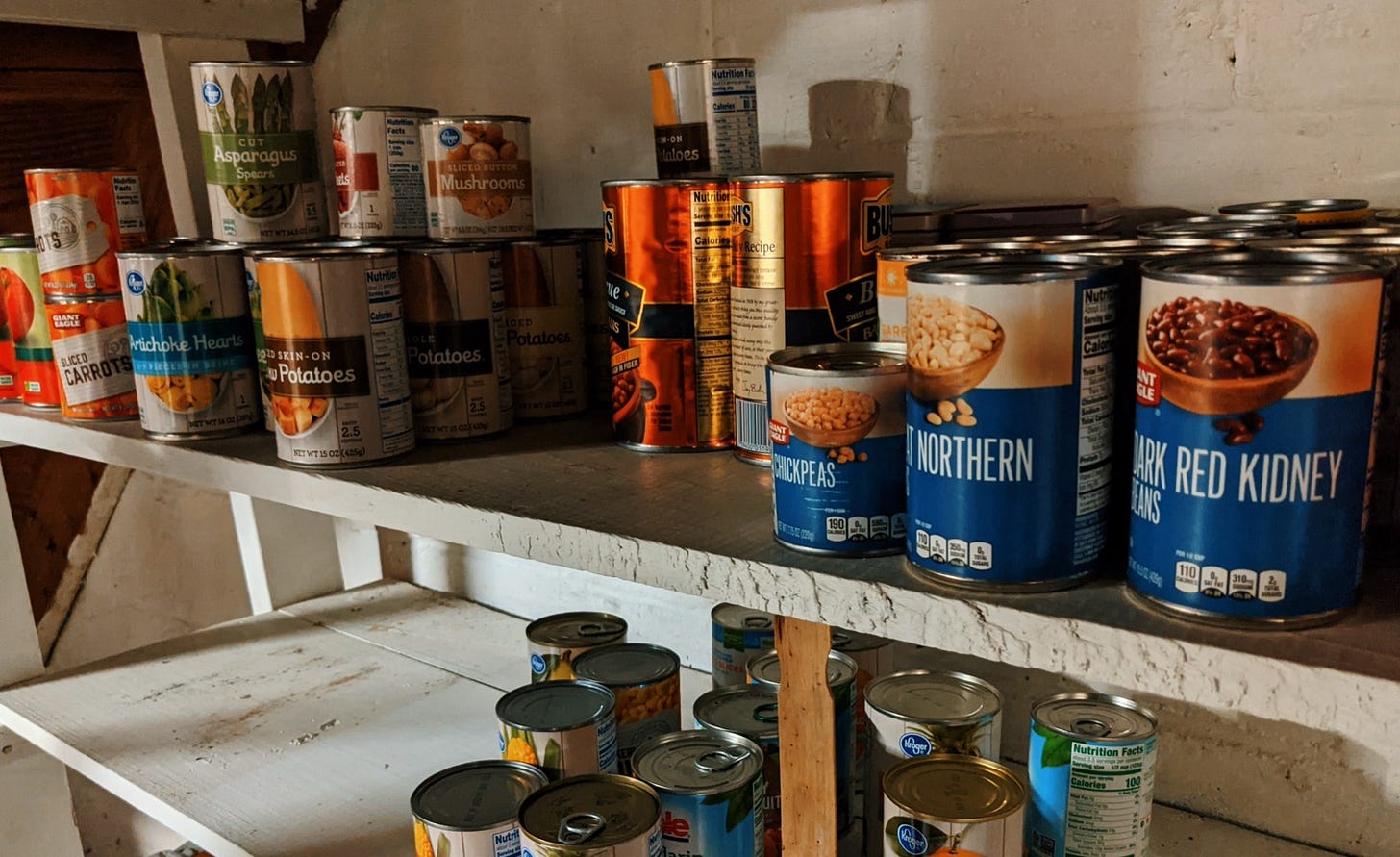Your Grandma Prepped

Odds are good that when you think of prepping, you picture a white guy with an armor-plated vest standing in front of his rack of guns or his stacks of MREs. He’s wearing Oakleys, he’s wearing a red hat, he’s about to put another flag decal on his pickup truck.
But that’s not what prepping is. Prepping is simply the steps we take to be ready for disaster—the whens and ifs of the world. If you’ve ever brought home extra toilet paper and a pint of Old Crow before a storm—congrats! You’ve prepped.
While pop-culture definitions of prepping call to mind AR-15s and the apocalypse, the prepping you and I do, even in 2020, will most likely respond to a smaller, community-scaled emergency. The good news is that whether that emergency is a blizzard, a sudden spike in COVID cases, or a climate-change-fueled derecho wind, the basics of preparing for each emergency remain the same. And while the preps we discuss here will focus on the individual by nature, you should always be thinking about your community. The man in the Oakleys is building taller fences—I want you to think about reaching over yours.
My Grandma Shiler was born into the Great Depression, and ours wasn’t a community that bounced back. I will remember her stories of feeding the family and scraping together a way to survive for the rest of my life. Stretch a can of soup with water—trade the family down the street for that soup in exchange for watching their kids. Every time I visited her, I knew that behind the cupboards there would be dozens and dozens of canned goods. She had three refrigerators—one nearly 50 years old—and all three were full of food and water. She knew what it was like to come home to an empty pantry, and so she prepared against the arrival of lean times. That is prepping.
For me, prepping is a pantry full of imperishable (or long-expiry) goods. It’s gallons of water set by (including some distilled) for drinking, cooking, and cleaning if the municipal tap were to suddenly run dry. It’s a fire plan, a get-home plan, and a reliable, efficient plug-in hybrid (with a full tank of gas). It’s giving my neighbors, even the ones I don’t like, some homegrown tomatoes, and letting them know I’m here if they need me for anything. It’s thinking about the future and the living we can sustain.
There is a lot to consider when it comes to deep preps. We could talk about knives, bug-out bag layouts, UV water purifiers. And we will. But the core of preparedness relates directly to some very immediate bodily needs: shelter, water, food—in that order. If you’re reading this, you’re probably lucky enough to have shelter checked off. That leaves water and food.
Tonight, or even better, right now:
- Rinse out that nearly empty gallon of milk/handle of whiskey/bottle of wine/whatever, and fill it up with water. Put it away.
The next time you get groceries:
- Buy two gallons of water. Put them with your former jug of Carlo Rossi.
- Buy three cans of beans. Red beans, navy, black, whatever you prefer.
- Repeat. Every time.
There. You’ve started preparing for whatever’s next.
